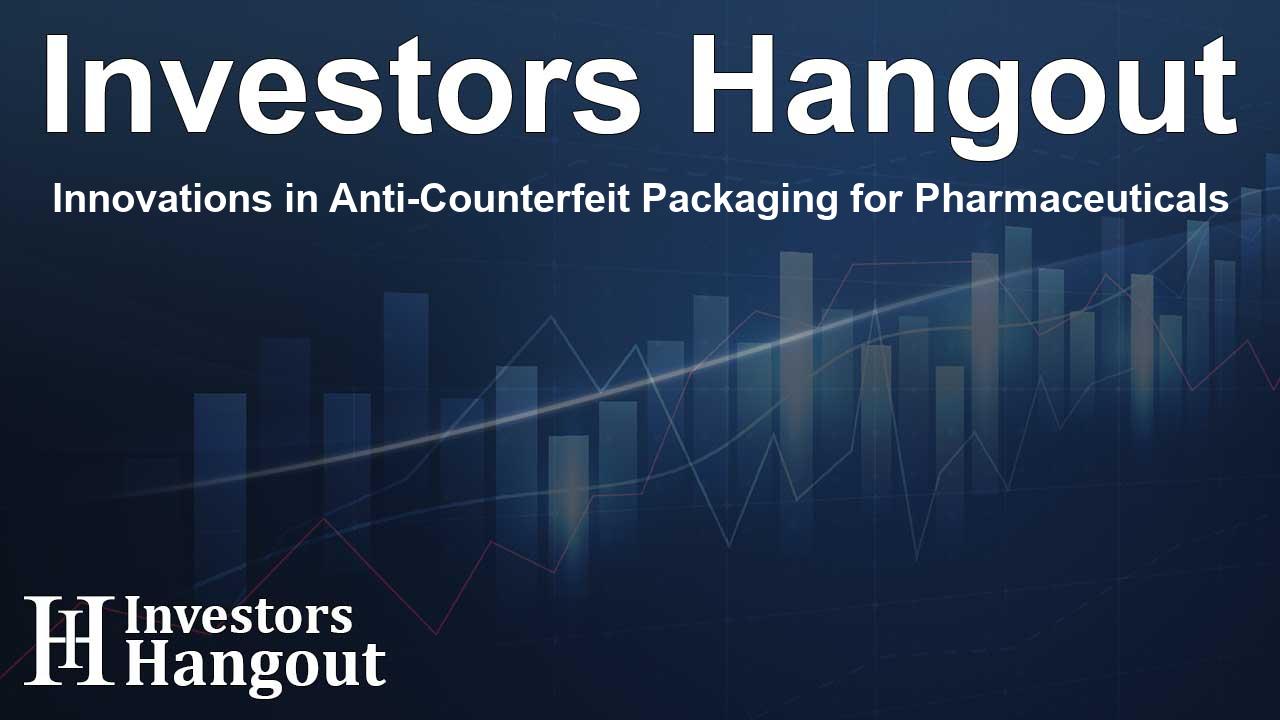Innovations in Anti-Counterfeit Packaging for Pharmaceuticals

Understanding the Anti-Counterfeit Pharmaceutical Packaging Market
The global anti-counterfeit pharmaceutical packaging market has been experiencing remarkable growth, estimated to reach approximately USD 138.88 billion by 2032. This expanding market highlights the urgent need for secure packaging solutions, driven primarily by the growing menace of counterfeit drugs. As governments worldwide tighten regulations to combat this pressing issue, manufacturers are increasingly adopting advanced technologies that enhance product traceability and reassure consumers about the authenticity of their medications.
Factors Driving Market Growth
In recent years, the pharmaceutical industry has become a prime target for counterfeiters, creating a significant demand for protective packaging measures. This demand is met through various technologies, including holograms, QR codes, RFID tags, and tamper-evident seals, designed to ensure the safety and reliability of pharmaceutical products. Not only do these innovations deter counterfeit activities, but they also foster consumer confidence by allowing users to verify the authenticity of their medications effectively.
Technological Advancements in Packaging
The implementation of advanced technologies, particularly digital serialization and blockchain solutions, has significantly boosted the growth of the anti-counterfeit packaging market. Blockchain, for instance, allows pharmaceutical companies to monitor and track the journey of each drug from production to sale, ensuring its integrity throughout the supply chain.
The Role of Smart Technologies
On the cutting edge of these advancements is the integration of smart packaging solutions that combine anti-counterfeit features with enhanced functionalities. A recent example includes Vina Technological Science Development JSC's innovative Vinacheck system, enabling real-time product authentication and customer engagement, which serves both product management and consumer protection effectively.
Challenges in Implementing Anti-Counterfeit Technologies
Despite the urgency to safeguard pharmaceutical products, various financial hurdles remain a barrier for many manufacturers. The initial investment required to incorporate advanced anti-counterfeiting technologies such as RFID tags and specialized packaging can be substantial. This financial burden is particularly challenging for smaller manufacturers that may struggle to balance compliance costs with their operational budgets.
Addressing the Financial Strain
Although the high costs associated with these technologies can be daunting, they are crucial not only for regulatory compliance but also for protecting consumers from potentially dangerous counterfeit medicines. As regulatory scrutiny increases and the incidence of counterfeits persists, investing in innovative packaging becomes more of a necessity than a choice.
Market Segmentation and Key Players
The anti-counterfeit pharmaceutical packaging market can be segmented based on usage features, applications, and regions. Key players in this industry include prominent companies like 3M and CCL Industries Inc., all striving to implement effective solutions to combat counterfeiting.
Regional Insights: North America Leading the Charge
In 2023, North America emerged as the strongest region for anti-counterfeit pharmaceutical packaging, largely due to stringent regulatory measures and advancements in compliance standards among pharmaceutical companies. A heightened awareness regarding drug safety among consumers has further propelled this market segment, positioning North America as a critical player in anti-counterfeit initiatives.
Frequently Asked Questions
What is the current market size of anti-counterfeit pharmaceutical packaging?
The market was valued at approximately USD 47.96 billion in 2023 and is projected to reach USD 138.88 billion by 2032.
What technologies are being utilized in anti-counterfeit packaging?
Common technologies include holograms, QR codes, RFID tags, and blockchain for effective tracking and verification of pharmaceuticals.
Why is North America a key player in this market?
North America leads due to stringent regulations and increased consumer awareness regarding drug safety, fostering a healthy demand for secure packaging solutions.
What challenges do manufacturers face in adopting anti-counterfeit technologies?
High initial investment costs and integration disruptions in existing production lines are significant challenges for pharmaceutical manufacturers.
How do smart technologies enhance anti-counterfeiting efforts?
Smart technologies facilitate real-time tracking and authentication, significantly improving product safety and consumer trust through advanced engagement tools.
About The Author
Contact Dominic Sanders privately here. Or send an email with ATTN: Dominic Sanders as the subject to contact@investorshangout.com.
About Investors Hangout
Investors Hangout is a leading online stock forum for financial discussion and learning, offering a wide range of free tools and resources. It draws in traders of all levels, who exchange market knowledge, investigate trading tactics, and keep an eye on industry developments in real time. Featuring financial articles, stock message boards, quotes, charts, company profiles, and live news updates. Through cooperative learning and a wealth of informational resources, it helps users from novices creating their first portfolios to experts honing their techniques. Join Investors Hangout today: https://investorshangout.com/
The content of this article is based on factual, publicly available information and does not represent legal, financial, or investment advice. Investors Hangout does not offer financial advice, and the author is not a licensed financial advisor. Consult a qualified advisor before making any financial or investment decisions based on this article. This article should not be considered advice to purchase, sell, or hold any securities or other investments. If any of the material provided here is inaccurate, please contact us for corrections.
